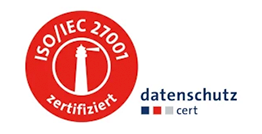Q&A with GAIA CEO, Dr. Mario Weiss
Hamburg, Germany, Monday 15 November 2021 10.00 CEST
GAIA CEO, Dr. Mario Weiss sits down with ZS.com’s Lukas Grabner for a one-on-one interview about the successful development and commercialization of digital therapeutics.
Digital therapeutics are on the rise and new routes for access and reimbursement for innovative solutions have emerged across countries in recent years. GAIA was an early player in this field and has focused on the development of evidence-based, safe, and accessible digital therapeutics for many years–well before real pathways for digital therapeutics exist. ZS sat down with GAIA CEO Dr. Mario Weiss for a conversation on how digital therapies make a positive impact on patients’ lives, how to address adoption barriers, and a broader outlook on the industry.
Lukas Grabner: Digital health and especially digital therapeutics have seen a lot of activity in Europe in the past year and GAIA is evidently one important player in this space. Can you give us a quick background on your organization and your visions?
Dr. Mario Weiss: We see ourselves as an R&D company with the mission to develop digital therapeutics that offer physicians, therapists, payers and patients the same effect sizes, similar safety profiles and equal levels of convenience as found in well-developed pharmaceutical solutions. Today, we have about 200 employees and are present in Europe and the US. GAIA was founded 20 years ago by a group of practicing physicians who were increasingly stretched due to a growing patient demand and their inability to meet those within their working hours. We asked ourselves, “What can we do to support our patients outside office hours or when we are not available?” Today, we offer several fully automated digital therapeutics for the treatment of anxiety, depression, RA, Oncology and MS-related fatigue.
Lukas Grabner: There have been important developments in Europe regarding digital health–most notably DiGA in Germany but also innovation pathways in other countries such as the UK and funding through traditional medtech pathways in some instances in France. What is your perception of the state of the digital health landscape and maturity in Europe today? What does it mean for manufacturers like GAIA or pharma and medtech organizations that are trying to introduce digital solutions?
Dr. Mario Weiss: If you have a good product with compelling evidence, you will find a way to get funding or reimbursement. Obviously, not all countries are at the same stage with formalized reimbursement pathways. Therefore, the responsibility is also on companies to build great products supported by robust evidence. That way, governments are forced to review and reimburse our products. Because in the end, what alternatives do governments have? Due to the aging population, the demand for care keeps on growing. We either need to digitize or accept that we won’t be able to provide sufficient care to the entire population. For example, the recent introduction of DiGA was fueled by the increasing body of evidence of the clinical value of digital therapeutics. I think some countries will flip sooner than others, but ultimately governments will realize that you can only keep the level of care high and costs reasonable by embracing digitization.
Lukas Grabner: Looking across Europe today, how well do evidence requirements that payers care about align across markets? How much country-by-country tailoring is needed and what does it mean for companies in the space?
Dr. Mario Weiss: Evidence is evidence. Robust evidence is generally recognized globally. There are of course exceptions, like Japan, which may require locally conducted clinical trials. Before launching in some markets, you may also want to make sure that you have a representation of the larger ethnicities in that country in the trial. However, these considerations are not unique to designing a clinical trial for digital therapeutics, but also true for any pharmaceutical product. We have become really good at conducting efficient clinical trials. The benefit of digital therapeutics is that the trial typically only lasts one to two years and if you see that the product isn’t working, you can quickly decide to stop the trial and move on.
Lukas Grabner: Let’s talk about adoption once a therapy is approved and funded. Adoption for several digital health solutions is often slow and not as widespread as the national access and reimbursement coverage might suggest (a top example being some of the DiGA in German). Reasons could be anywhere from physician awareness and comfort to patient interest and long-term adherence. What do you see as key barriers that manufacturers need to overcome? What are ways to bridge this gap?
Dr. Mario Weiss: Patient compliance is probably one of the biggest challenges and something you need to manage well. Taking a pill is easier than sitting in front of your computer for 30 minutes. On the other hand, pills have much more side effects then our digital interventions. For us, compliance is functionality of the software. Managing critical compliance, i.e. sufficient engagement to ensure treatment benefits, is something we have become good at. Today, our compliance rate is comparable to that of drugs with good safety profiles at around 60-70%. We also often see that a patient becomes more compliant with a drug if they are prescribed our digital therapeutics as well. In addition to patient compliance, there was initially a resistance amongst physicians towards our solutions. Physicians hate digitization because it has always been a burden to them. Any new IT system or digitization generates more data demands for the physician. I suspect that there are also country-specific differences in attitudes towards digitization. The skepticism is probably more pronounced in Germany than say in the US, where physicians are overall more open to new technology.
Read the full interview here.








